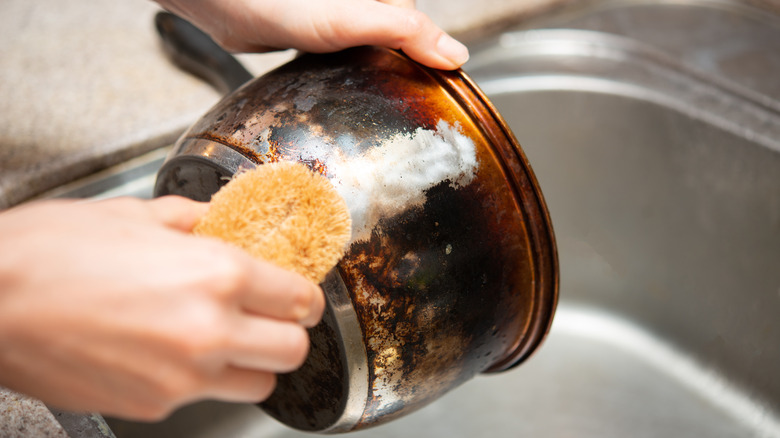Easily Remove Rust Stains From Stainless Steel With This Popular Household Staple
Whether you've spotted it on a sink, your oven, or a piece of cutlery, no one wants to find rust on their stainless steel items. However, the good news is you don't need to discard rusty pieces at first sight. In fact, if you catch rust early enough, it can be easily removed. All you'll need is a can of good old WD-40. While it may be confusing to see rust on your pristinely cared-for stainless steel — after all, it is corrosion-resistant — it's not impossible.
A number of things can result in rusted stainless steel. Saline, moisture, and heat are all culprits, and depending on where you live, those things are sometimes unavoidable. Humid areas, for instance, are notorious for rust showing up — and showing up fast. Even so, that's not to say those in humid conditions (or in any climate, for that matter) need to resign themselves to a faster turnover of household items. As evidenced by a WD-40 tutorial, as frustrating as rust can be, your items can be saved. As soon as you've spotted rust, purchase a can of WD-40 with their Smart Straw, or dig through your cabinets to find the one you already have. You'll also want some gloves, possibly a mask, and a nylon brush. Sparkling stainless steel, here we come.
WD-40 is a simple fix, but do take precautions
To get WD-40 to work its magic on your rusted items, pop on a pair of gloves and crack the windows (or, if possible, take the items outside), then simply spray a small amount of the product onto the affected area. Once applied, the formulation needs to be left to work for 10 to 15 minutes, so set a timer. When the time is up, use a nylon brush to remove the now-lifted rust. Finish up by washing the area or object thoroughly with soap and water. And presto! — your items are restored!
Simplicity and effectiveness aside, there are a few precautions you'll want to keep in mind when using this method. WD-40 is highly flammable, so in addition to gloves and cracked windows, it's vital to use it away from any sources of heat or open flame. If you're using the product on an electrical appliance, like your stovetop or refrigerator, it's also advised to unplug it before spraying the WD-40 — and in the case of a gas stove, ensure your gas is off. It's also important to note that in the event that you do inhale any of the fumes, you'll need to see a doctor right away.
Post-use, the WD-40 should prevent rust from reappearing in the immediate future. However, for a less intense way to avoid rust setting in again, you can use petroleum jelly as a substitute. Your stainless steel will thank you.
